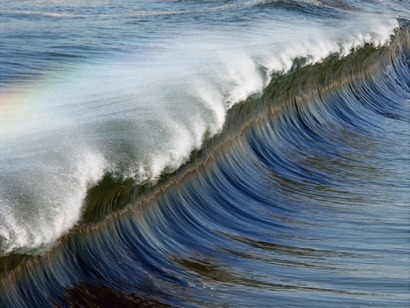
For the last two years the Executive Committee has been working on a new Strategic Plan to support a 3rd five-year mandate from the IEA. This mandate was successfully awarded in February 2012 and the Annual Report outlines some of the components of the new Strategic Plan, including status reports about on-going projects (known as “Annexes”):
• Annex I: “Review, Exchange and Dissemination of Information on Ocean Energy Systems”
• Annex IV: “Assessment of Environmental Effects and Monitoring Efforts for Ocean Wave, Tidal and Current Energy Systems”
• Annex V: “Exchange and Assessment of Ocean Energy Device Project Information and Experience”.
The Annual Report also presents a new and important activity, the development and production of a brochure entitled the “International Vision for Ocean Energy”, which has been developed by the Executive Committee over the last two years. The brochure sets out the present status of the ocean energy industry, benefits, cost trends, policies, markets, challenges and opportunities for ocean energy to 2050.
A comprehensive overview of international activities and achievements in ocean energy can be found in the country reports produced by each member country. The year 2011 was marked by the entry of the newest member of OES, the Government of the People’s Republic of China.
Since 2008, the Annual Report has also included a special section dedicated to articles by invited experts addressing a specific theme. This year the chosen theme is “Marine Spatial Planning and Ocean Energy” and four articles are presented:
In the article “Marine Spatial Planning: An Idea Whose Time Has Come”, Charles Ehler, consultant to the Marine Spatial Planning Initiative of UNESCO’s Intergovernmental Oceanographic Commission, gives a very comprehensive explanation about Marine Spatial Planning, why it is needed and what are the key elements.
The article points out that the principal output of MSP is a comprehensive spatial management plan for a marine area or ecosystem and, as mentioned by the author, the plan moves the whole system toward a “vision for the future”. Where are we today? Where do we want to be? How do we get there? What have we accomplished? These simple questions are answered by MSP. The author concludes by stating that while ocean energy has not been a principal driver of MSP so far, the situation is likely to change over the next two decades.
The second article entitled “Maritime Spatial Planning (MSP) in the European Union and its application to marine renewable energy” focus on the European Union (EU) context. Anne Marie O’Hagan, a Charles Parsons Research Fellow from Hydraulics & Maritime Research Centre (HMRC), Ireland, outlines the policy basis for MSP in the EU, the principles for a common European approach and the status of MSP in individual Member States. Inclusion of marine renewable energy requirements in MSP depends on the status of the industry in each country. Therefore, different approaches and examples from a few countries are discussed.
Also, key considerations for inclusion of marine renewable in MSP are mentioned. One conclusion is that MSP will have significant implications for the development of marine renewables, in general, and for the ocean energy sector, in particular. On the other hand, policy developments are likely to influence the future development and functioning of MSP. These aspects are discussed in the article.
Over the last four years, Oregon, led by the Department of Land Conservation and Development (DLCD), has worked to address, in particular, this marine management challenge by updating the State’s existing Territorial Sea Plan (TSP) to include considerations on best locations for future wave energy development.
“Siting Wave Energy on the Oregon Coast: The Oregon Territorial Sea Plan and Siting Analysis Tools” is the third article by Simon Geerlofs, from Pacific Northwest National Laboratory, as first author, with collaboration from the Oregon Department of Energy and U.S. Department of Energy. The article describes how the relationship between MSP and ocean energy siting has been explored.
Oregon plan is seen as an example to encourage wave energy developers to test and locate devices in Oregon waters. On the other hand, the difficulty and time frames to obtain licenses for deployment and operation of ocean energy projects is presently perceived as the major threat to efficient implementation of this renewable energy (RE) source. In the forth article ‘Mountains of “Blue Tape” Are Barriers to United States and New Zealand Marine Renewable Energy Projects’, Ian Boisvert addresses the obstacles faced by developers to get the necessary approvals for testing a device in the sea by comparing the complex regulatory regimes in New Zealand and the United States. The author points out the need to streamline the permits process, in which difficulties are mainly created by bureaucratic unfamiliarity with marine energy projects and their environmental effects.
OES, also known as the Implementing Agreement on Ocean Energy Systems, is an intergovernmental collaboration between countries, which operates under aframework established by the International Energy Agency in Paris. Presently the OES has 19 country members with a number of other countries in the process of joining OES.
For additional information:

